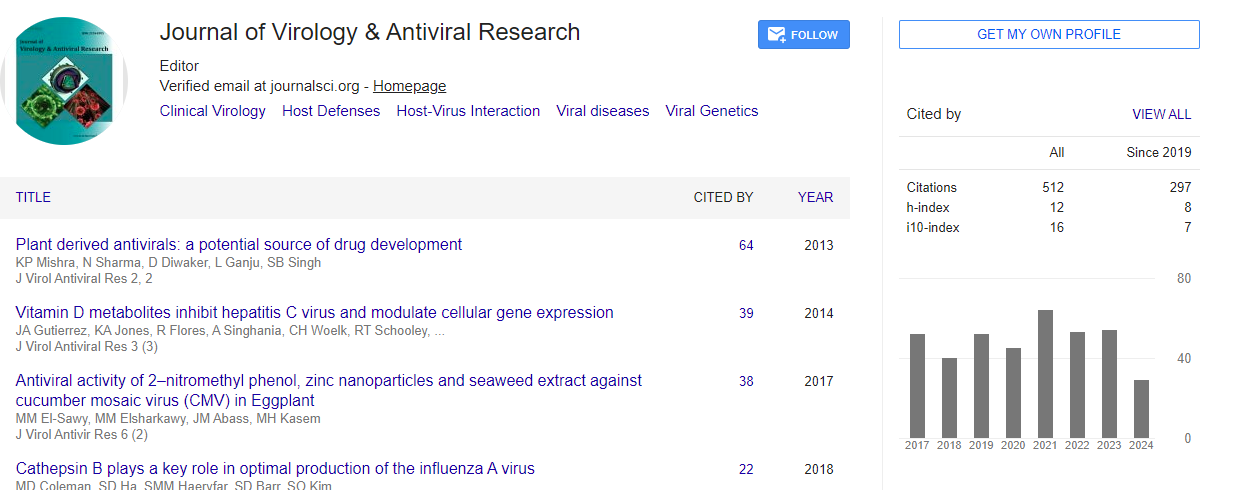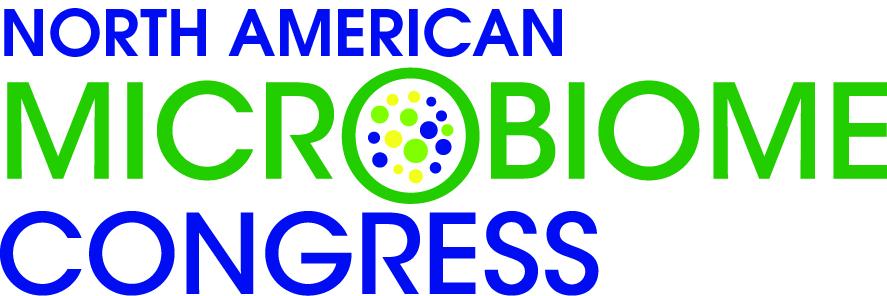Opinion Article, J Virol Antivir Res Vol: 13 Issue: 1
Deciphering the Complexity of Host-Virus Interaction: From Molecular Mechanisms to Therapeutic Implications
Fabiano Colombo*
1Department of Pathophysiology and Transplantation, University of Milan, Milan, Italy
*Corresponding Author: Fabiano Colombo,
Department of Pathophysiology and
Transplantation, University of Milan, Milan, Italy
E-mail: fabi.colombo@unimi.it
Received date: 26 February, 2024, Manuscript No. JVA-24-136879;
Editor assigned date: 28 February, 2024, PreQC No. JVA-24-136879 (PQ);
Reviewed date: 14 March, 2024, QC No. JVA-24-136879;
Revised date: 22 March, 2024, Manuscript No. JVA-24-136879 (R);
Published date: 28 March, 2024, DOI: 10.4172/ 2324-8955.1000689
Citation: Colombo F (2024) Deciphering the Complexity of Host-Virus Interaction: From Molecular Mechanisms to Therapeutic Implications. J Virol Antivir Res 13:1.
Abstract
Description
The intricate dance between viruses and their host organisms forms the cornerstone of viral pathogenesis, driving disease progression and shaping the host immune response. This research article delves into the multifaceted dynamics of host-virus interaction, exploring viral entry mechanisms, host immune responses, viral evasion strategies, and the implications for antiviral therapy and vaccine development. By unravelling the molecular intricacies of this interaction, novel therapeutic targets and strategies can be identified to combat viral infections effectively. Viruses represent a significant threat to global public health, causing a spectrum of diseases ranging from the common cold to severe pandemics. Central to the success of viral infections is the complex interplay between the virus and its host organism.
Understanding the molecular mechanisms underlying host-virus interaction is pivotal for elucidating viral pathogenesis, developing targeted therapeutic interventions, and designing effective vaccines. This study provides a comprehensive overview of host-virus interaction, from viral entry to immune evasion strategies, and discusses the therapeutic implications of these interactions. The initial step in host-virus interaction is viral entry into susceptible host cells. Viruses employ diverse strategies to breach the host cell membrane and gain access to the intracellular environment. This may involve direct fusion of the viral envelope with the host cell membrane, receptor-mediated endocytosis, or exploitation of cellular transport machinery.
Key viral surface proteins, such as glycoproteins and spike proteins, play essential roles in mediating attachment to host cell receptors and facilitating entry. Understanding the molecular determinants of viral entry is essential for developing antiviral strategies that target this critical step in the viral life cycle. Upon viral infection, the host immune system mounts a multifaceted response aimed at eliminating the invading pathogen and preventing further spread. Innate immune responses provide the first line of defense, characterized by the rapid production of pro-inflammatory cytokines, activation of natural killer cells, and recruitment of phagocytic cells to the site of infection.
Subsequently, adaptive immune responses are initiated, involving the activation of T-cells and B cells, which recognize viral antigens and mount specific immune responses. The coordinated action of innate and adaptive immunity is essential for controlling viral replication and clearing the infection. Viruses have evolved sophisticated mechanisms to evade host immune surveillance and establish persistent infections. These evasion strategies target various components of the host immune response, including interference with interferon signaling pathways, modulation of antigen presentation, and inhibition of apoptosis. Viruses may also undergo antigenic variation to escape recognition by the host immune system, further complicating the host-virus arms race. Understanding these viral evasion strategies is paramount for developing effective antiviral therapies that can overcome immune evasion mechanisms and enhance host immune responses.
Insights gleaned from studying host-virus interaction have profound implications for the development of antiviral therapies and vaccines. Targeting viral entry mechanisms, such as blocking viral attachment or fusion, represents a promising approach for inhibiting viral replication and preventing disease progression. Similarly, strategies that boost host immune responses, either through the use of immunomodulatory agents or vaccination, can confer protection against viral infections. Furthermore, advances in vaccine technology, such as mRNA vaccines and viral vector-based vaccines, offer new avenues for vaccine development against emerging viral pathogens.
Conclusion
Host-virus interaction is a dynamic and intricate process that underlies the pathogenesis of viral infections. By elucidating the molecular mechanisms involved in viral entry, host immune responses, and viral evasion strategies, researchers can identify novel therapeutic targets and strategies for combating viral infections effectively. Continued research in this field is essential for staying ahead of evolving viral threats and safeguarding global public health.
 Spanish
Spanish  Chinese
Chinese  Russian
Russian  German
German  French
French  Japanese
Japanese  Portuguese
Portuguese  Hindi
Hindi 

